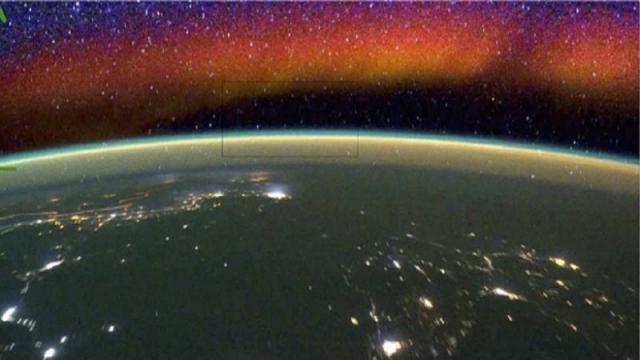Humans are pretty jaded these days. We can write most of the strange phenomena we see off as science (or we honestly don’t care). But when Roman philosophers such as Pliny the Elder witnessed moonless nights glow bright like the day, it definitely made an impression. Others since then have been awestruck by these “bright nights”, too.
Scientists from York University in Toronto have since observed what they call “enhanced airglow events” where elements in the night sky release photons. They know what’s causing airglow in their satellite data. But now they think they have figured out what enhances the glow, which may have caused the brighter nights documented throughout history.
The researchers aren’t using new data — they’re reanalysing data from the WINDII instrument that operated on a NASA satellite from 1991 to 2004, in this case just nighttime airglow data from 1992 and 1996. The instrument took all sorts of readings on the Earth’s upper atmosphere, and in this case the researchers are analysing changes in the properties of the airglow’s light, especially green light coming from the sun’s rays splitting oxygen molecules. They published their research online this month in the journal Geophysical Research Letters.
Identifying the cause of ancient bright nights required first picking out the airglow events and determining whether they’d be visible to the human eye. Combining this data with lunar data and atmospheric data, the researchers figured there was probably around one bright night per year in the time before rampant night pollution, since the right atmospheric flow conditions needed to occur during a new moon.
All that data analysis proved a few things. The bright night glow came from enhancements in airglow caused by just the right atmospheric conditions. The peaks of different atmospheric waves created by air masses can line up, enhancing the glow effect. Since the enhancements fit within the range of human eyesight and appeared in the right latitude for the right amount of time, the researchers concluded that they were observing indicators in their satellite data of the same bright night lights Pliny the Elder saw.
This is basically informed speculation, of course, since we’ll never really know what the folks recording bright nights actually saw. But the researchers do feel their observations are consistent with past descriptions of these events. And it’s cool to see that data from older experiments still gets put to good use.
As a note, you will never see this airglow unless you live in a fairly remote place, because humans beam enough light into the sky to more or less drown out most of the interesting night time atmospheric phenomena. Sorry!
